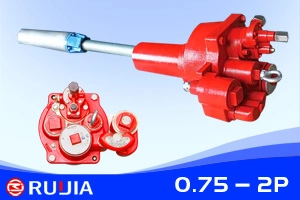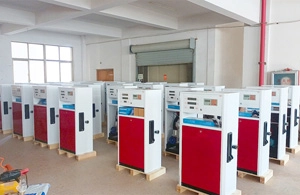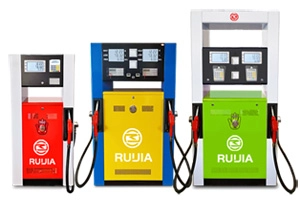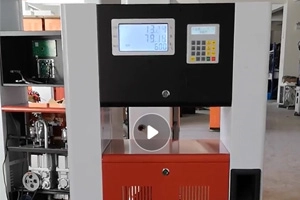- 20+ Years Of History
- 30+ Countries
- 50000 Yearly Production
What is an Electric Oil Pump
What is an Electric Oil Pump?
Introduction
An electric oil pump (EOP) is a critical component in modern automotive and industrial systems, designed to circulate oil using electric power rather than relying solely on mechanical drives. As industries shift toward electrification and energy efficiency, EOPs have gained prominence due to their precision, adaptability, and reduced dependency on engine-driven mechanisms. This article explores the working principles, applications, advantages, and challenges of electric oil pumps.
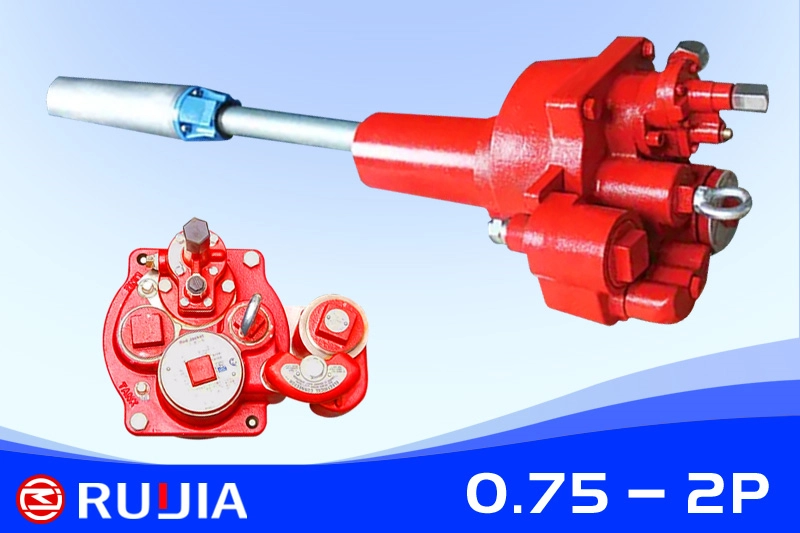
Working Principle of Electric Oil Pumps
Electric oil pumps operate using an electric motor to drive a pump mechanism, which circulates oil through a system. The key components include:
Electric Motor – Converts electrical energy into mechanical motion.
Pump Mechanism – Typically a gear, vane, or centrifugal pump that moves oil.
Control Unit – Regulates pump speed and flow based on system demands.
Unlike traditional mechanical oil pumps, which rely on engine rotation, EOPs can operate independently, ensuring lubrication even when the engine is off (e.g., in hybrid vehicles during electric-only mode).
Applications of Electric Oil Pumps
1. Automotive Industry
Hybrid & Electric Vehicles (HEVs/EVs): Since these vehicles may not always run the internal combustion engine (ICE), EOPs ensure continuous lubrication.
Start-Stop Systems: In conventional cars with start-stop technology, EOPs maintain oil pressure when the engine shuts off.
Transmission & Turbochargers: Some advanced transmissions and turbochargers use EOPs for precise oil delivery.
2. Industrial Machinery
Hydraulic Systems: Used in manufacturing equipment where variable oil flow is needed.
Renewable Energy Systems: Wind turbines and other energy systems utilize EOPs for reliable lubrication.
Advantages of Electric Oil Pumps
Energy Efficiency – Unlike mechanical pumps, EOPs only operate when needed, reducing parasitic losses.
Precision Control – Electronic control allows adaptive oil flow based on real-time conditions.
Reduced Wear & Tear – Ensures lubrication even during cold starts, minimizing engine damage.
Flexibility in Design – Can be placed anywhere in the system, unlike mechanically driven pumps.
Challenges & Limitations
Higher Initial Cost – EOPs are more expensive than traditional mechanical pumps.
Dependence on Electrical Systems – Requires a stable power supply; failure can lead to lubrication loss.
Heat Generation – Electric motors may produce additional heat, requiring thermal management.
Future Trends
With the rise of electric vehicles (EVs) and smart manufacturing, EOPs are expected to evolve with:
AI-Based Predictive Maintenance – Using sensors to optimize pump performance.
Integration with Vehicle-to-Grid (V2G) Systems – Enhancing energy management in smart grids.
Lightweight & Compact Designs – Improving efficiency in next-gen automotive applications.
Conclusion
Electric oil pumps represent a significant advancement in lubrication technology, offering efficiency, adaptability, and improved performance in modern systems. While challenges such as cost and electrical dependency exist, ongoing innovations ensure their growing role in automotive and industrial applications. As industries continue to embrace electrification, EOPs will remain a cornerstone of efficient fluid management.
What is an Electric Oil Pump? A Comprehensive Guide
An electric oil pump is a critical component in modern machinery and vehicles, designed to circulate or pressurize oil within systems such as engines, hydraulic systems, and lubrication networks. Unlike traditional mechanical pumps, which rely on direct mechanical linkage to the engine, electric oil pumps are powered by an electrical system, offering greater flexibility, efficiency, and control. This article explores the definition, working principles, types, applications, and significance of electric oil pumps in today’s technological landscape.
Definition and Core Functionality
An electric oil pump is an electromechanical device that uses an electric motor to drive a pumping mechanism, transferring or pressurizing oil within a system. Its primary purpose is to ensure consistent oil flow, maintain proper lubrication, and support the efficient operation of machinery. These pumps are widely used in automotive, industrial, and commercial applications where reliable oil circulation is essential.The core functionality of an electric oil pump revolves around converting electrical energy into mechanical energy to move oil. This process involves a motor, which rotates a pump mechanism (such as gears, vanes, or pistons) to create suction and pressure. The oil is then directed through a system, either to lubricate moving parts, cool components, or facilitate hydraulic operations.
Key Components and Working Mechanism
A typical electric oil pump consists of several key components:
- Electric Motor: Provides the power source, often a DC motor in automotive applications or an AC motor in industrial settings.
- Pump Housing: Encases the internal mechanisms and ensures a sealed environment for oil flow.
- Pump Mechanism: The heart of the pump, which can be a gear pump, vane pump, or piston pump. Each type operates differently but achieves the same goal of moving oil.
- Gear Pumps: Use interlocking gears to create suction and pressure.
- Vane Pumps: Rely on rotating vanes to trap and move oil.
- Piston Pumps: Utilize reciprocating pistons to generate high-pressure oil flow.
- Control System: Includes sensors, switches, and regulators to monitor and adjust oil pressure, flow rate, and operational parameters.
- Inlet and Outlet Ports: Allow oil to enter and exit the pump, connecting it to the system it serves.
When activated, the electric motor drives the pump mechanism, which draws oil from a reservoir and forces it through the system. The control system ensures optimal performance by adjusting the pump’s output based on demand, preventing over-pressurization or under-lubrication.
Types of Electric Oil Pumps
Electric oil pumps come in various designs, each suited to specific applications:
- Gear Pumps:
These are the most common type, known for their simplicity and reliability. They are ideal for low to medium-pressure applications, such as engine lubrication in vehicles. - Vane Pumps:
These pumps use sliding vanes within a rotor to create chambers that expand and contract, drawing in and expelling oil. They are quieter and more efficient than gear pumps, making them suitable for precision applications. - Piston Pumps:
These are high-pressure pumps that use reciprocating pistons to generate force. They are often used in hydraulic systems, such as those in heavy machinery or aircraft. - Variable Displacement Pumps:
These pumps adjust their output based on system demands, improving energy efficiency. They are commonly found in modern vehicles with advanced engine management systems.
Each type has its advantages, depending on factors like pressure requirements, noise levels, and maintenance needs.
Applications Across Industries
Electric oil pumps are indispensable in a wide range of sectors:
- Automotive Industry:
In vehicles, electric oil pumps are critical for engine lubrication, power steering systems, and transmission cooling. For example, in hybrid and electric vehicles, they help maintain oil pressure in the engine while the internal combustion engine is off, ensuring smooth operation when the vehicle restarts. - Industrial Machinery:
In manufacturing plants, electric oil pumps are used to lubricate bearings, gears, and other moving parts. They are also integral to hydraulic systems, which power equipment like cranes, excavators, and conveyor belts. - Aerospace:
Aircraft rely on electric oil pumps to lubricate engines and hydraulic systems, ensuring safe and efficient flight operations. These pumps must withstand extreme temperatures and pressures, making their design highly specialized. - Renewable Energy:
Wind turbines and solar power systems use electric oil pumps for lubrication and cooling. For instance, wind turbines require continuous lubrication of their gearboxes to minimize wear and extend lifespan. - HVAC Systems:
In heating, ventilation, and air conditioning systems, electric oil pumps help circulate refrigerants and lubricants, maintaining optimal performance and energy efficiency.
Advantages of Electric Oil Pumps
The adoption of electric oil pumps offers several benefits over traditional mechanical pumps:
- Energy Efficiency: Electric pumps can be precisely controlled, reducing energy consumption and operational costs.
- Reduced Maintenance: With fewer moving parts and less mechanical wear, electric pumps often require less frequent servicing.
- Improved Reliability: Modern designs incorporate advanced materials and sensors, enhancing durability and performance.
- Flexibility: Electric pumps can be easily integrated with digital systems, enabling remote monitoring and automation.
- Quiet Operation: Compared to mechanical pumps, electric models produce less noise, improving workplace environments.
Challenges and Considerations
Despite their advantages, electric oil pumps also present challenges:
- Cost: High-quality electric pumps can be more expensive than mechanical alternatives, particularly for specialized applications.
- Power Dependency: They require a stable electrical supply, making them vulnerable to failures during power outages.
- Complexity: Advanced control systems may necessitate technical expertise for installation and troubleshooting.
However, advancements in battery technology and smart systems are addressing these issues, making electric oil pumps increasingly viable for diverse applications.
Conclusion
An electric oil pump is a vital component in modern machinery, combining electrical and mechanical engineering to ensure efficient oil circulation and system performance. From automotive engines to industrial hydraulics, these pumps play a crucial role in maintaining operational reliability and safety. As technology continues to evolve, electric oil pumps are likely to become even more sophisticated, with features like AI-driven diagnostics and energy-saving mechanisms. Understanding their functionality and applications not only highlights their importance but also underscores their potential to drive innovation across industries. Whether in a car, a factory, or an aircraft, the electric oil pump remains a cornerstone of modern engineering.
What is an Electric Oil Pump?
An electric oil pump is a motor-driven device designed to circulate, pressurize, or transfer oil (or other viscous fluids) within a system. It replaces or supplements conventional mechanically driven pumps, offering greater control over flow rates and pressure while reducing dependency on fossil fuel-powered engines. EOPs are integral to modern hybrid and electric vehicles (EVs), industrial machinery, and renewable energy installations, where precision, energy efficiency, and responsiveness are paramount.
Key Components and Design
An electric oil pump typically consists of the following components:
- Electric Motor: The core of the system, often a brushless DC (BLDC) motor for high efficiency and durability.
- Pump Mechanism: A rotary gear, vane, or piston assembly that pressurizes and moves the oil.
- Controller Unit: An electronic control module (ECM) that regulates motor speed and pump output based on sensor inputs.
- Sensors: Monitor parameters such as temperature, pressure, and flow rate to optimize performance.
- Inlet/Outlet Ports: Connect the pump to the oil reservoir and the target system (e.g., engine, transmission, or hydraulic circuit).
This compact, modular design allows EOPs to be installed in space-constrained environments while enabling seamless integration with smart control systems.
How Does an Electric Oil Pump Work?
The operation of an electric oil pump involves three stages:
- Power Activation: When the system requires oil circulation, the controller activates the electric motor.
- Fluid Pressurization: The motor drives the pump mechanism (e.g., gears rotating in a chamber), creating suction at the inlet port. Oil is drawn into the pump, pressurized, and discharged through the outlet.
- Dynamic Control: Sensors relay real-time data (e.g., engine temperature or hydraulic demand) to the controller, which adjusts the motor’s speed via pulse-width modulation (PWM). This ensures optimal flow rates and minimizes energy consumption.
Unlike mechanical pumps, whose output is fixed to engine RPM, EOPs operate independently, delivering oil precisely when and where it is needed.
Types of Electric Oil Pumps
Electric oil pumps are categorized based on their design and application:
Gear Pumps:
- Use meshing gears to displace oil. Ideal for high-pressure applications like automotive transmissions.
- Simple design but less efficient at variable speeds.
Vane Pumps:
- Employ rotating vanes in a slotted rotor. Offer smoother flow and are common in hydraulic systems.
Piston Pumps:
- Utilize reciprocating pistons for ultra-high pressure (e.g., industrial machinery).
- Complex but highly efficient.
Centrifugal Pumps:
- Use an impeller to accelerate oil radially. Suitable for low-viscosity fluids and high-flow scenarios.
Advantages Over Mechanical Pumps
Electric oil pumps outperform traditional mechanical pumps in several ways:
Energy Efficiency:
- Operate only when needed, reducing parasitic energy loss. For example, in hybrid vehicles, EOPs maintain lubrication even when the ICE is off.
Precision Control:
- Adjust flow rates dynamically to match system demands, improving performance and reducing wear.
Reduced Emissions:
- By optimizing oil circulation, EOPs enhance engine efficiency and lower CO2 emissions.
Compact and Lightweight:
- Eliminate the need for belt drives or complex mechanical linkages, saving space and weight.
Versatility:
- Compatible with hybrid, electric, and conventional systems, as well as renewable energy technologies.
Applications of Electric Oil Pumps
The adaptability of EOPs has led to their adoption across industries:
Automotive Systems:
- Engine Lubrication: In EVs and hybrids, EOPs ensure continuous oil supply to bearings and moving parts, even during engine start-stop cycles.
- Transmission Cooling: Maintain optimal temperatures in dual-clutch transmissions (DCTs) and CVTs.
- Thermal Management: Circulate coolant or oil in battery thermal management systems (BTMS) to regulate EV battery temperatures.
Industrial Machinery:
- Provide pressurized oil for hydraulic presses, CNC machines, and turbines.
- Enable precise lubrication in high-speed manufacturing equipment.
Renewable Energy:
- Used in wind turbines to lubricate gearboxes and cool generators.
- Support solar tracking systems by powering hydraulic actuators.
Aerospace:
- Ensure reliable lubrication in aircraft engines and auxiliary power units (APUs).
Marine Applications:
- Manage oil circulation in ship engines and thrusters, enhancing durability in harsh environments.
Challenges and Limitations
Despite their benefits, electric oil pumps face challenges:
Higher Initial Cost:
- Complex electronics and motors make EOPs more expensive than mechanical pumps.
Heat Management:
- Prolonged operation can generate motor heat, requiring additional cooling mechanisms.
Dependency on Sensors:
- Malfunctioning sensors or software glitches can disrupt performance.
Power Supply Requirements:
- In EVs, EOPs draw power from the battery, necessitating efficient energy management.
The Future of Electric Oil Pumps
As industries prioritize sustainability and automation, EOPs are evolving rapidly:
Integration with AI and IoT:
- Smart pumps connected to predictive maintenance systems can anticipate failures and optimize performance.
Material Innovations:
- Lightweight composites and corrosion-resistant materials extend pump lifespan.
Higher Power Density:
- Advances in motor technology enable smaller, more powerful EOPs.
Eco-Friendly Designs:
- Development of pumps compatible with biodegradable oils to reduce environmental impact.
Autonomous Vehicles:
- EOPs will play a vital role in self-driving cars, ensuring reliable lubrication and cooling without driver intervention.
Conclusion
The electric oil pump represents a paradigm shift in fluid management, combining precision, efficiency, and adaptability. From extending the range of electric vehicles to optimizing wind turbine performance, EOPs are at the heart of modern engineering solutions. As technology advances, their role in reducing energy consumption, lowering emissions, and supporting smart systems will only grow. For industries navigating the transition to electrification and sustainability, the electric oil pump is not just a component—it’s a cornerstone of progress. Understanding its mechanics and applications underscores its significance in building a cleaner, more efficient future.
